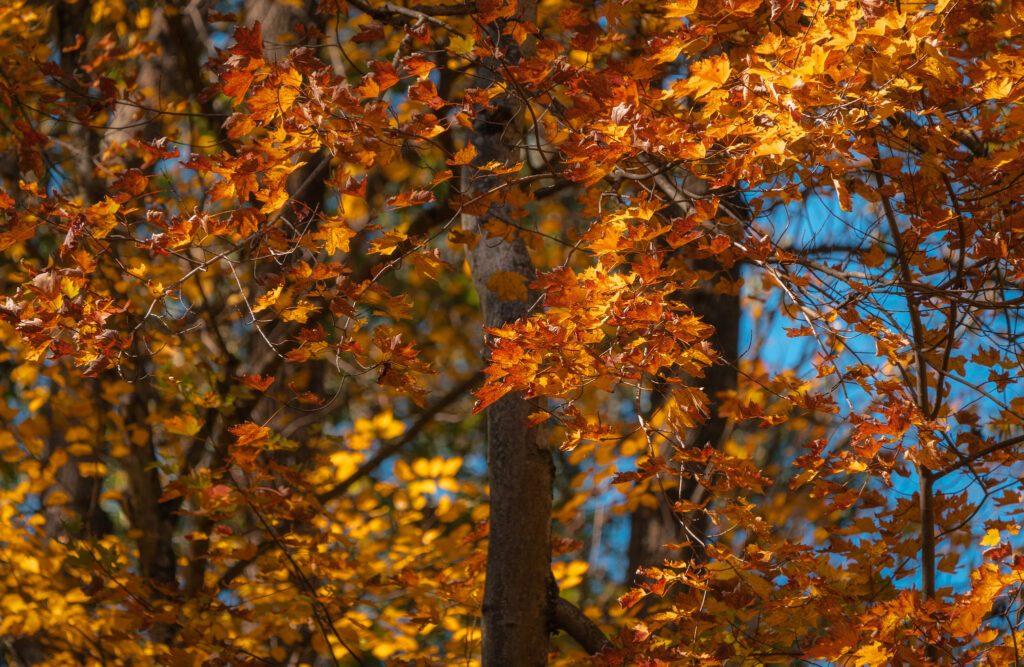
We had a particularly colorful fall in the Northeast this year. Almost everywhere you looked, there were brilliant displays of yellow, orange, and red. The colors of fall are a result of chemistry and environmental events that may have taken place many months in the past.
The color of leaves comes from 4 pigments whose effects are governed by photosynthesis. The one that is actually used in photosynthesis is chlorophyll and it causes leaves to be green. But when a tree begins to prepare for dormancy, it stops producing chlorophyll, the green pigmentation fades, and the other pigments that were already in the leaves become visible.
There are xanthoplylls, which are the yellow pigments that are seen the most in fall trees. They are the same pigments that color egg yolks and sometimes parts of the human eye. They are only produced by plants and appear in humans and animals only through consumption.
There are carotenes, which are the orange pigments found in fruits and vegetables, such as carrots, oranges, some bell peppers and squashes.
And there is anthocyanin, which is the pigment found in blueberries, blackberries, and red or violet roses. Its color depends on the pH level of the plant; higher pH leads to darker color. This is the pigment seen in red maples, black cherry trees, Shumard oaks, and more. Only 10% of trees in temperate climates produce anthocyanin and its red pigmentation and most of those trees are in New England.
All these pigments serve purposes. They help trees absorb light energy, prevent sun damage, and even regulate how much energy chlorophyll produces.
There are complicated chemical and environmental factors at play in fall foliage but when they come together like they did this year, it’s a magnificent spectacle.
**********
Web Links
Photo, posted October 17, 2020, courtesy of John Brighenti via Flickr.
Earth Wise is a production of WAMC Northeast Public Radio.
Leave a Reply